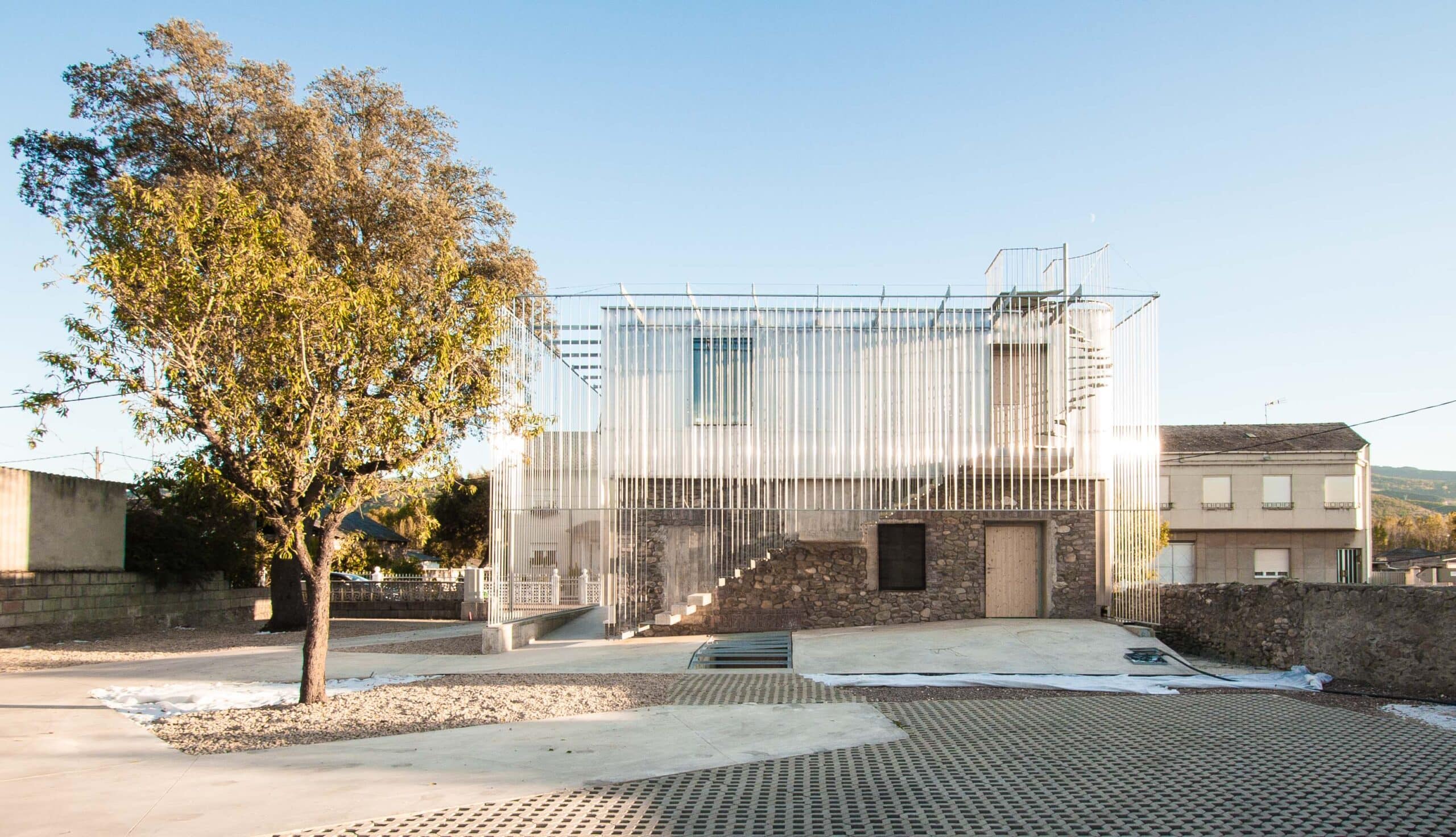


The project intervenes on a pre-existence executed in two phases in the middle of the 20th century. It is a large plot, for residential use, adapted from a previous agricultural use, which contains several hundred-year-old trees and is located at the crossroads of the main roads of the scattered town of Dehesas. With this change of use, the aim is to generate a workplace that provides new possibilities to an ageing population and opens a new collective space in a strategic point of the town.
The proposal rehabilitates a prototypical residential property, which already included a small grocery store, built in 1954 and executed halfway between vernacular tradition and local modernity. Later, the height was extended in 1976, using traditional, modern techniques as well as the reuse of the same wooden beams from the original house for the roof.
The contemporary operation, in the rural-urban context, resolves in the first place its position with respect to the current official alignment, different from the original. A concrete plinth is built that regularizes the piece, but does not maintain orthogonality with the pre-existing one. On the limit of this plinth rises a metal warp that generates a very light geometric veil, which solidifies or dilutes depending on the foreshortening and will be a support for vegetation, shade or audiovisual.
This element, which is what offers the recognizable image of the building, is integrated into the gray of the fog and returns different brightness depending on the sun. It is resolved with a mixed set of aluminum and galvanized steel. An upper suspension ring, placed with handcrafted fittings on plates embedded in the slab at the height of the parapet, and a lower tension ring built with UPN50 profiles form a 12x12 meter square plan. The warp is spun on these hot-dip galvanized and perforated profiles. At the back, between this glaze and the material of the building, the staircase is also inserted, built with 3/5 veneer, mechanically anchored to the concrete flights and suspended with a 10mm threaded rod at the ends.
The pre-existing house offers an internal and an external face. Inside, it's all about getting as much space as possible. Some encounters are discovered in the emptying operation that try to be repaired in a convenient way, while others are provoked that serve the new use.
The interiors rotate around two boxes that articulate the space. The lower one, cold, made of concrete and metal, provides light diffusion and reflections. The upper one, warmer, made of pine wood, is suitable for habitat, recreational and meeting uses, which expand to the outside through the glass that looks towards the mountainous landscape of El Bierzo.
On its external face, the building tries to dematerialize its presence through the use of polycarbonate typical of local greenhouses, which is anchored to the facade with hot-rolled and galvanized S235 steel profiles. It is a skin that scales through the pre-existing gaps and is interrupted by the great new ones, all sharpened by steel. Its carpentry is resolved with 3mm smooth galvanized sheet metal pre-frames, which support the glass, offering only the thickness of the sheet itself. The transformation causes a loss of massiveness that is enhanced by the gray color that links the façade with the sky. The elevations vibrate horizontally, making the glaze resonate with the polycarbonate; as they melt into the sky as they ascend.
The urbanization orders the levels of transit, parking and living, distinguishing its quality with the materials. Inside the concrete surface is the access hatch to the facilities basement. Made up of a galvanized frame that supports the 20.20.2 grating.
The entire discourse is consolidated in the contained air between the glaze and the façade. This intermediate space allows the old volume to breathe and take on a certain intimacy with respect to the external context. A diluted place, which is a buffer between the public and private domains, which time will take care of building, but it is ready to live. The project closes according to its representativeness, more specifically at night. The contained air lights up, generating a real halo, which is at the same time a sign of the office and a beacon in the cross that draws the crossroads.